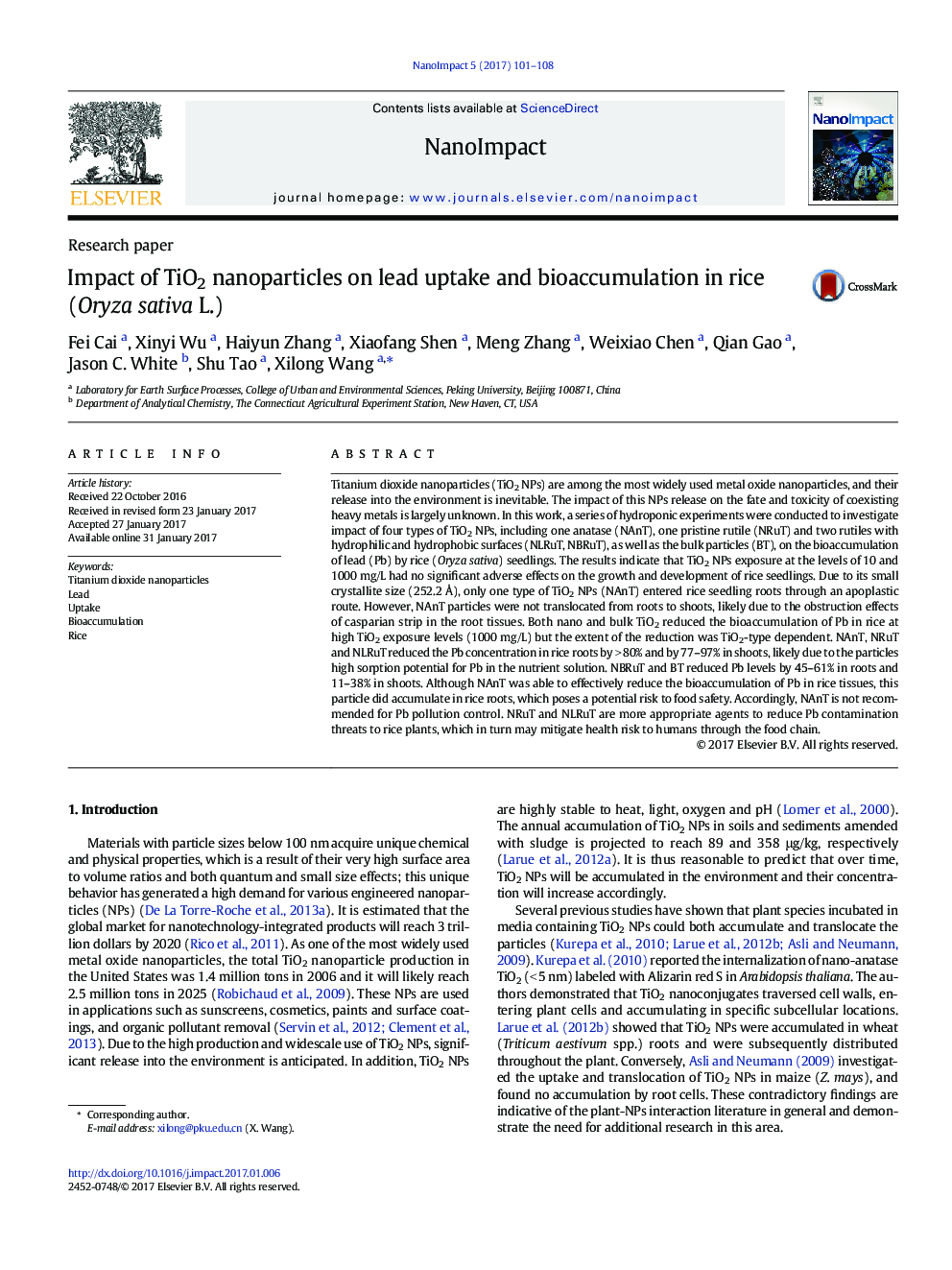| کد مقاله | کد نشریه | سال انتشار | مقاله انگلیسی | نسخه تمام متن |
|---|---|---|---|---|
| 5560718 | 1562022 | 2017 | 8 صفحه PDF | دانلود رایگان |

- Abbreviation: Nanoparticles (NPs)
- TiO2 NPs exposure at tested levels did no significantly affect rice seedling growth.
- Only one kind of TiO2 NPs tested were taken up by rice seedling roots.
- The TiO2 NPs taken up were not translocated from rice seedling roots to shoots.
- Both nano and bulk TiO2 at high exposure levels reduced Pb bioaccumulation in rice.
Titanium dioxide nanoparticles (TiO2 NPs) are among the most widely used metal oxide nanoparticles, and their release into the environment is inevitable. The impact of this NPs release on the fate and toxicity of coexisting heavy metals is largely unknown. In this work, a series of hydroponic experiments were conducted to investigate impact of four types of TiO2 NPs, including one anatase (NAnT), one pristine rutile (NRuT) and two rutiles with hydrophilic and hydrophobic surfaces (NLRuT, NBRuT), as well as the bulk particles (BT), on the bioaccumulation of lead (Pb) by rice (Oryza sativa) seedlings. The results indicate that TiO2 NPs exposure at the levels of 10 and 1000Â mg/L had no significant adverse effects on the growth and development of rice seedlings. Due to its small crystallite size (252.2Â Ã ), only one type of TiO2 NPs (NAnT) entered rice seedling roots through an apoplastic route. However, NAnT particles were not translocated from roots to shoots, likely due to the obstruction effects of casparian strip in the root tissues. Both nano and bulk TiO2 reduced the bioaccumulation of Pb in rice at high TiO2 exposure levels (1000Â mg/L) but the extent of the reduction was TiO2-type dependent. NAnT, NRuT and NLRuT reduced the Pb concentration in rice roots by >Â 80% and by 77-97% in shoots, likely due to the particles high sorption potential for Pb in the nutrient solution. NBRuT and BT reduced Pb levels by 45-61% in roots and 11-38% in shoots. Although NAnT was able to effectively reduce the bioaccumulation of Pb in rice tissues, this particle did accumulate in rice roots, which poses a potential risk to food safety. Accordingly, NAnT is not recommended for Pb pollution control. NRuT and NLRuT are more appropriate agents to reduce Pb contamination threats to rice plants, which in turn may mitigate health risk to humans through the food chain.
279
Journal: NanoImpact - Volume 5, January 2017, Pages 101-108